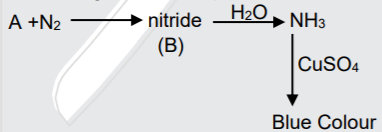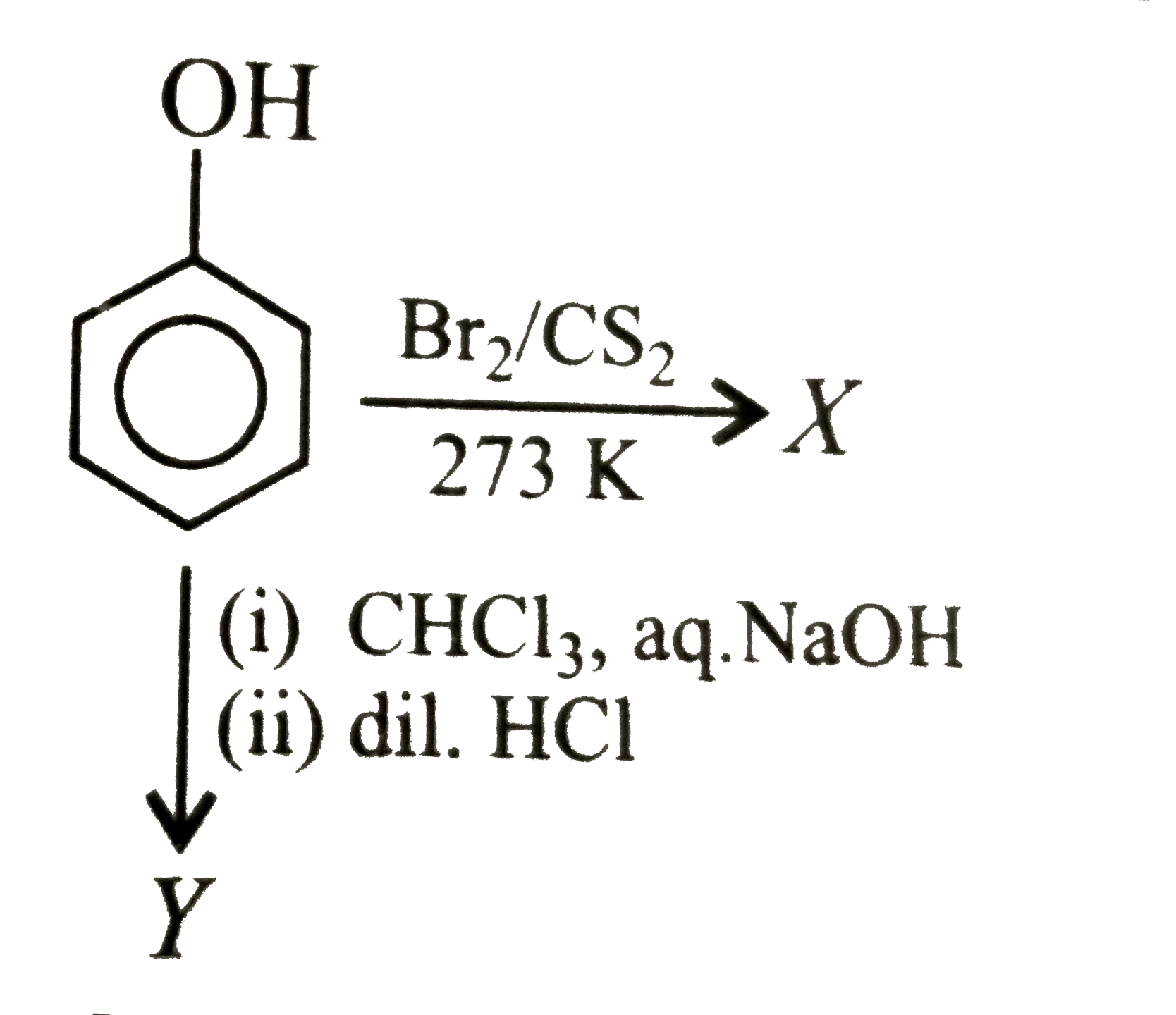
respectively in the given reactionsSolution in Telugu
I2IO−3
IO−3,IO−4
IO−3,I2
I2O5,IO−3
The correct Answer is:A
I−H+−−→I2
I−Neutral−−−−→IO−3
Topper's Solved these Questions
- BOOK - AAKASH SERIESCHAPTER - D & F BLOCK ELEMENTSEXERCISE - LEVEL-II (LECTURE SHEET) (EXERCISE-II)(LINKD COMPERHENSION TYPE QUESTIONS)19videos
D & F BLOCK ELEMENTS
- BOOK - AAKASH SERIESCHAPTER - D & F BLOCK ELEMENTSEXERCISE - LEVEL-II (LECTURE SHEET) (EXERCISE-III)(MATCH OF FOLLOWING QUESTIONS)9videos
D & F BLOCK ELEMENTS
- BOOK - AAKASH SERIESCHAPTER - D & F BLOCK ELEMENTSEXERCISE - PRACTICE SHEET-5 (INTEGER ANSWER TYPE QUESTIONS)6videos
D & F BLOCK ELEMENTS
- BOOK - AAKASH SERIESCHAPTER - COMPLEX COMPOUNDS EXERCISE - PRACTICE EXERCISE45videos
COMPLEX COMPOUNDS
- BOOK - AAKASH SERIESCHAPTER - D - BLOCK ELEMENTSEXERCISE - PRACTICE EXERCISE50videos
D - BLOCK ELEMENTS
Similar Questions
A metal sulphide A gives gas B with rotten egg smell and a colourless sulphate C, when treated with dil H2SO4. B reacts with K2Cr2O7/H+ to form D, a white grey element. D burns in oxygen to yield E a colourless gas. If B is added to E, it gives D and a colourless liquid, which turns anhydrous CuSO4 blue. C gives precipitate with NH3(aq) or NaOH, which dissolves in excess of NaOH
02:04View SolutionMatch the following questions
 02:06View Solution
02:06View SolutionHow many incomplete orbitals are present in inner transition elements ?
View SolutionThe primary and secondary valencies of the central metal ion in the complex [Co(NH3)6]Cl3 respectively are
02:18View SolutionWhich of the following element has high density
04:50View SolutionIn the given reaction A and B will respectively be :
04:35View SolutionThe major organic products 'A' and 'B' in the given reactions are respective :
 01:50View Solution
01:50View SolutionIdentify P and (Q) respectively in the given reaction :
 02:19View Solution
02:19View SolutionGiven the following reaction sequence : A & B are respectively
 04:48View Solution
04:48View SolutionIn the given reaction :

What are A, B and C respectively ?02:50View SolutionIn this given reactions,

X and Y are respectively01:10View SolutionA reaction of first order with respect to reactant A and second order with respect to reactant B. the rate law for the reaction is given by
03:31View SolutionAt 25^(@)C , in which of the given reactions do standard enthalpies of reactions indicate standard enthalpies of formation of the product in the respective reactions-
09:23View SolutionIn the given reaction sequence

(A) and (B) respectively are :View Solutionनीचे दिये उत्प्रेरक और उनके संबंधित विधि / अभिक्रिया दिये गये हैं। गलत जोड़ी है
03:21View Solution

